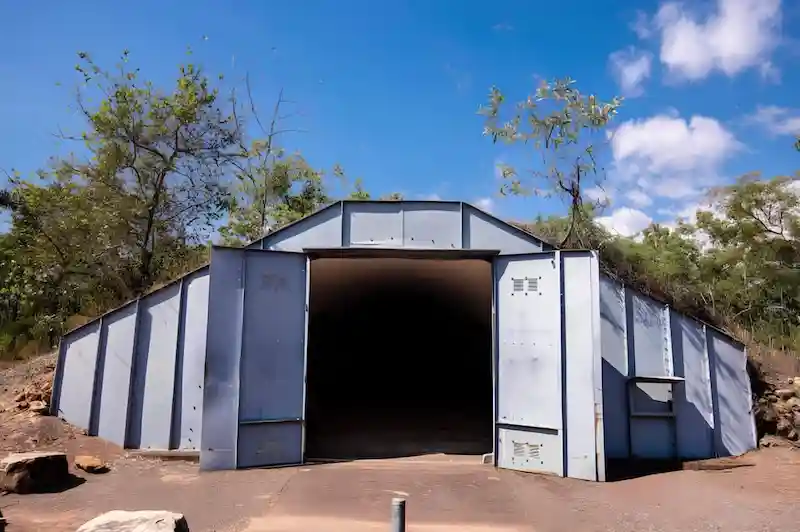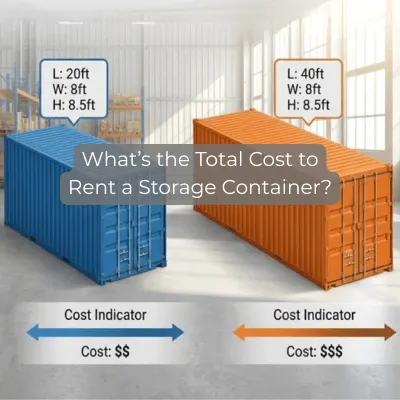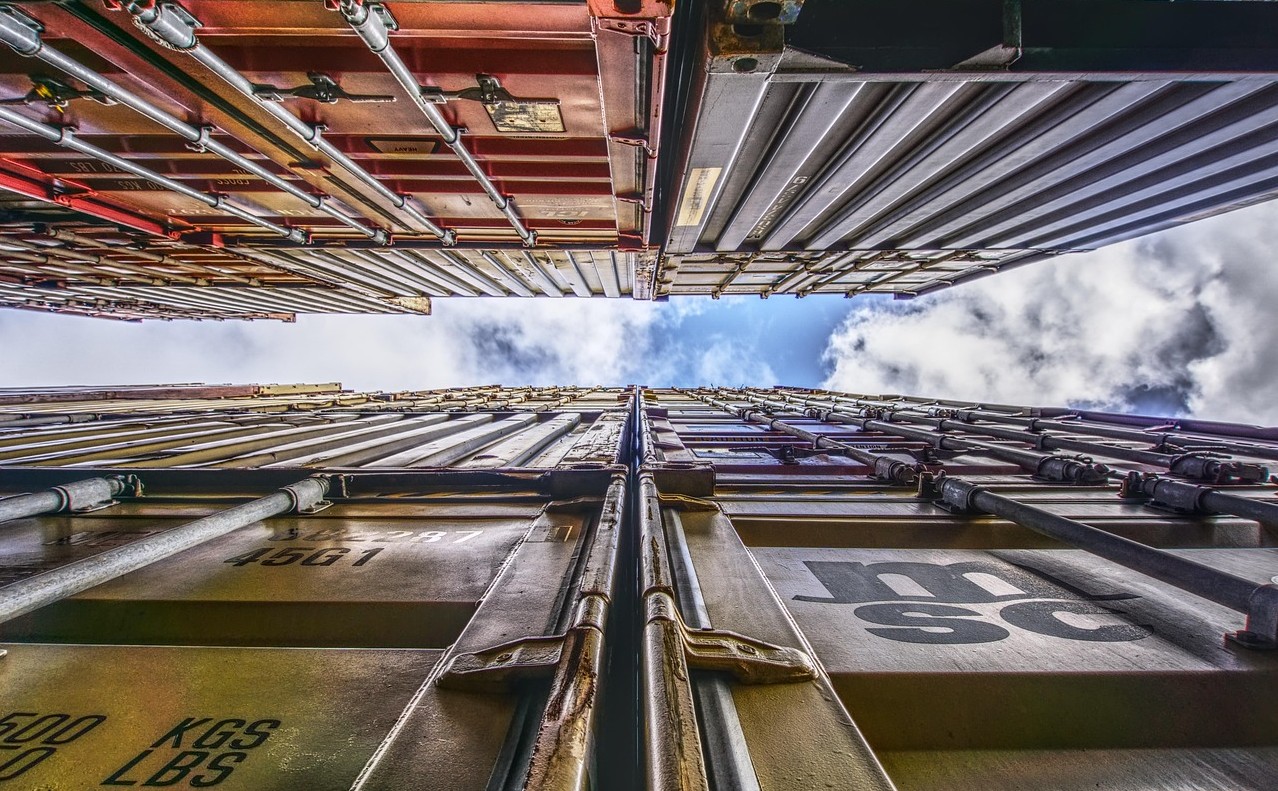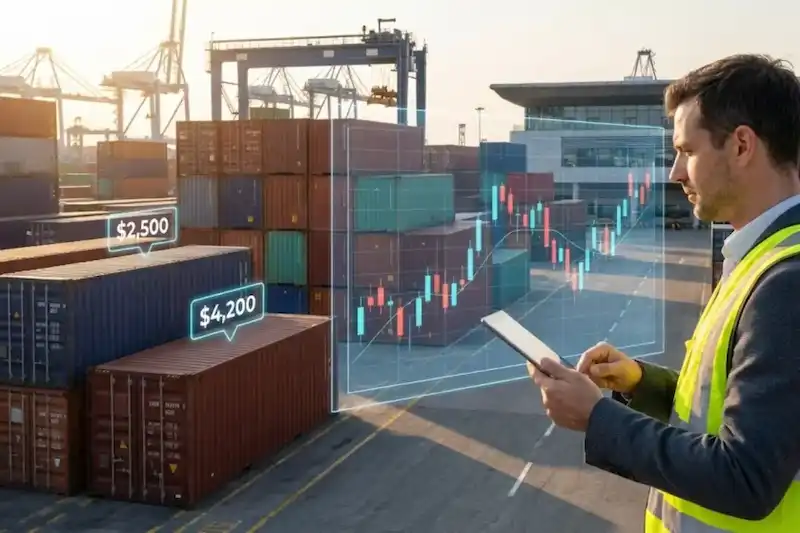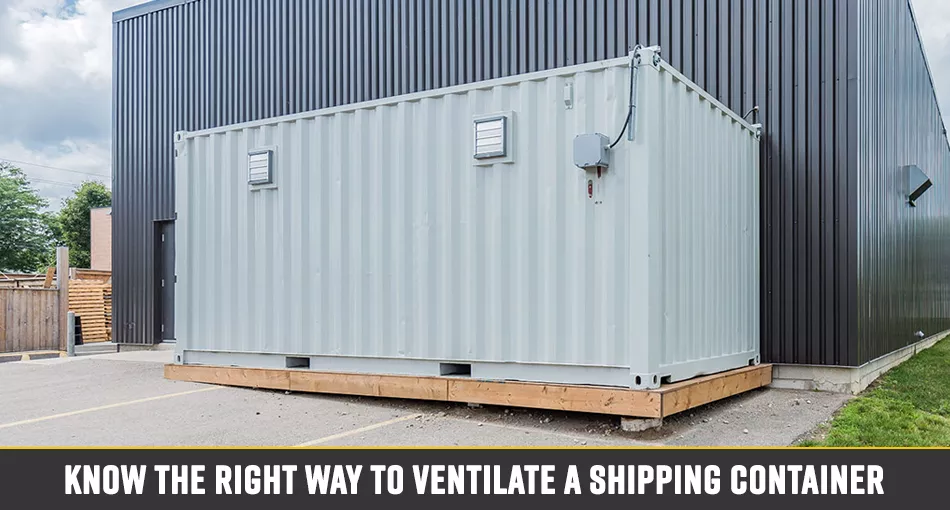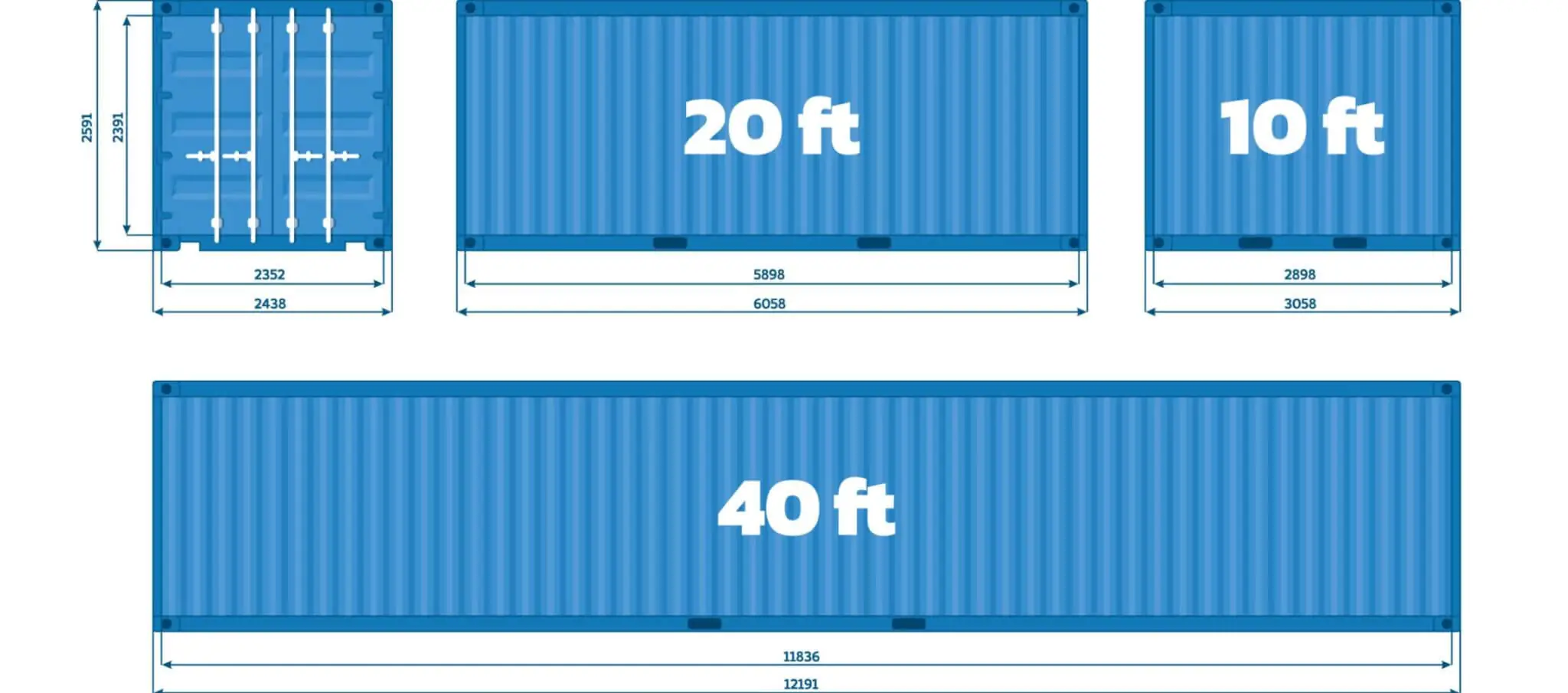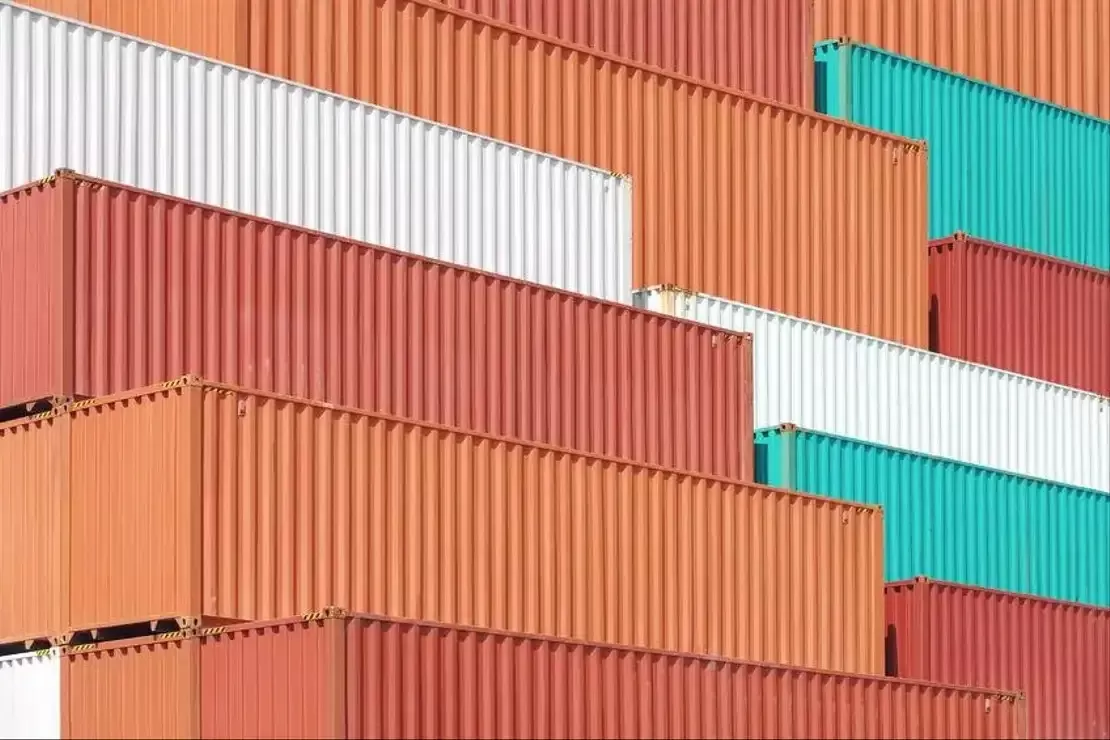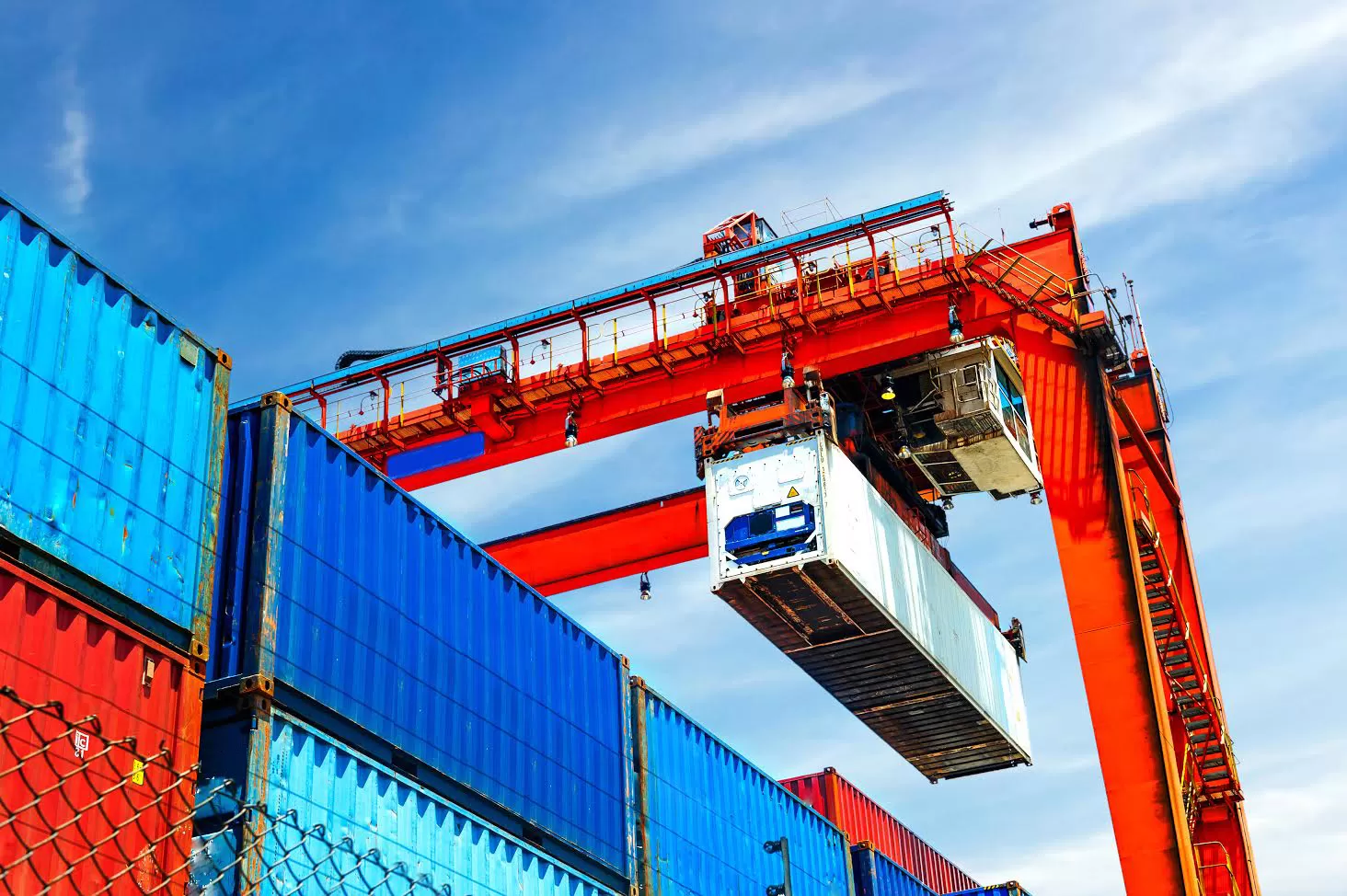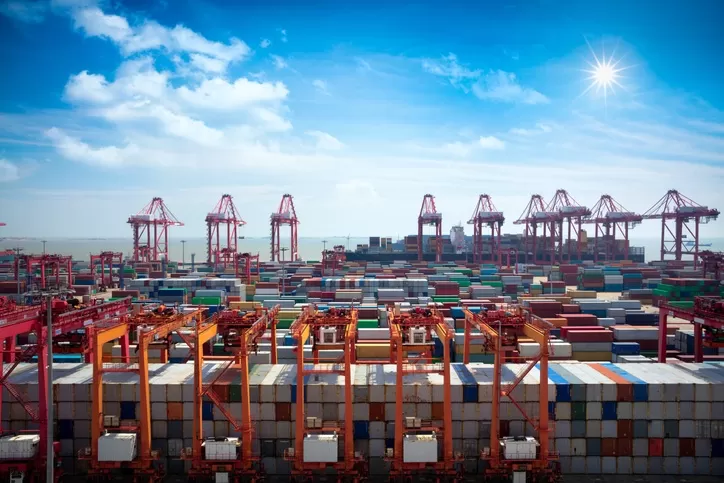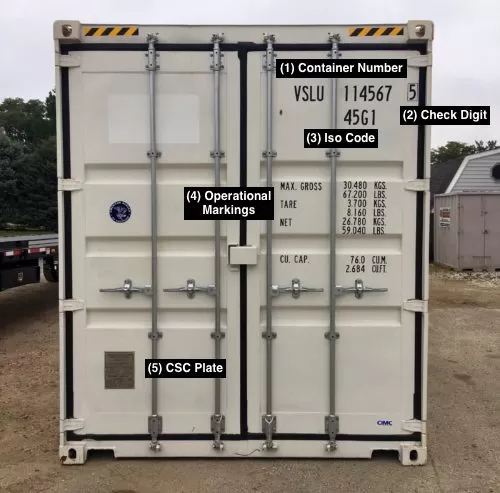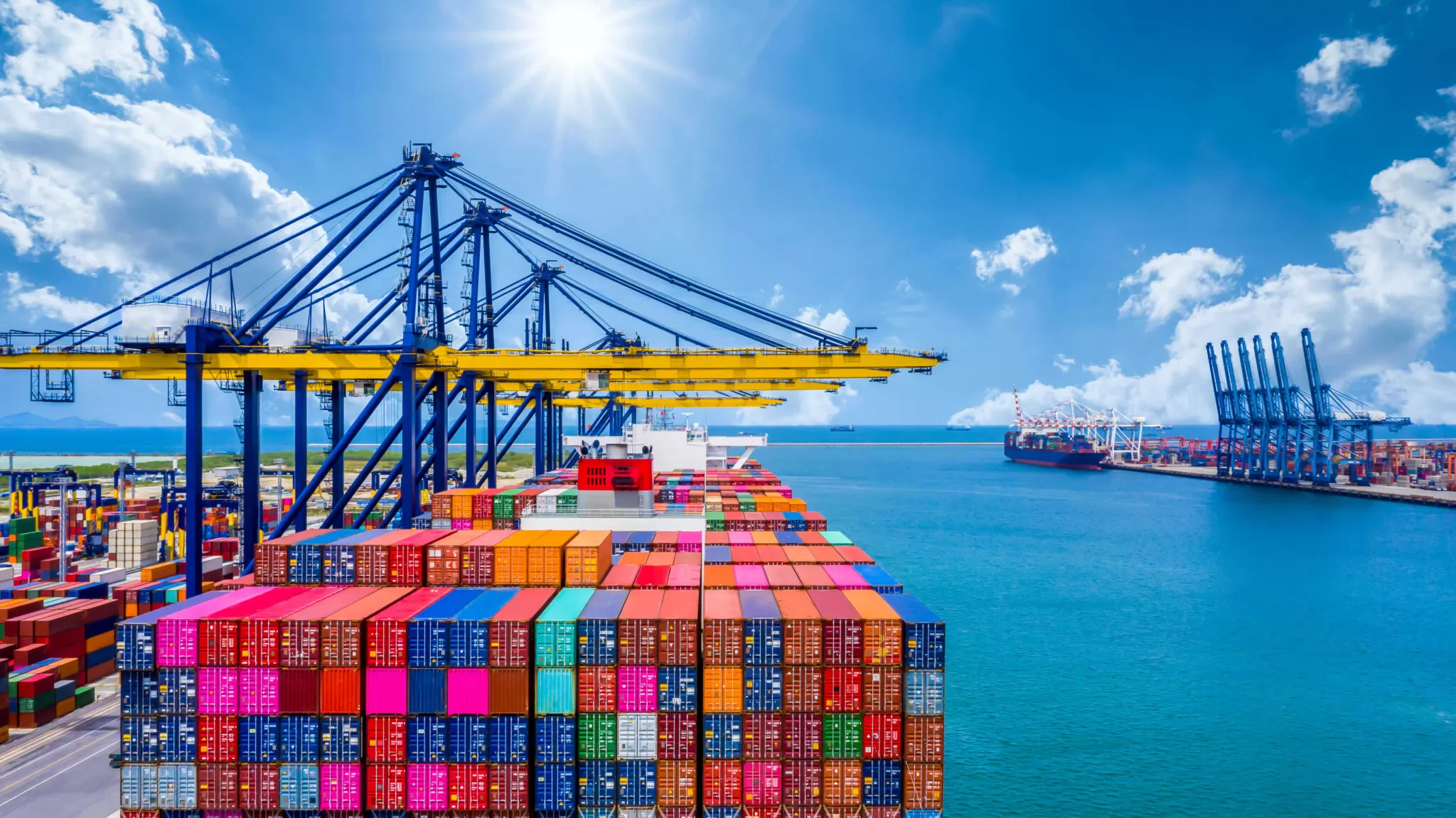Nhava Sheva Port, INNSA | Contacts Details + Terminals

The Port of Nhava Sheva, also known as Jawaharlal Nehru Port, is located just six nautical miles east of Mumbai across the Thane Creek. It is operated by the Jawaharlal Nehru Port Trust and stands as India’s busiest port as it handles nearly half of the nation’s trade in imports and exports. The Nhava Sheva location facilitates a connection to Mumbai and its neighboring areas and provides easy access to the markets of North India. In this article, we’ll tell you about this indispensable artery in the country’s trading network.
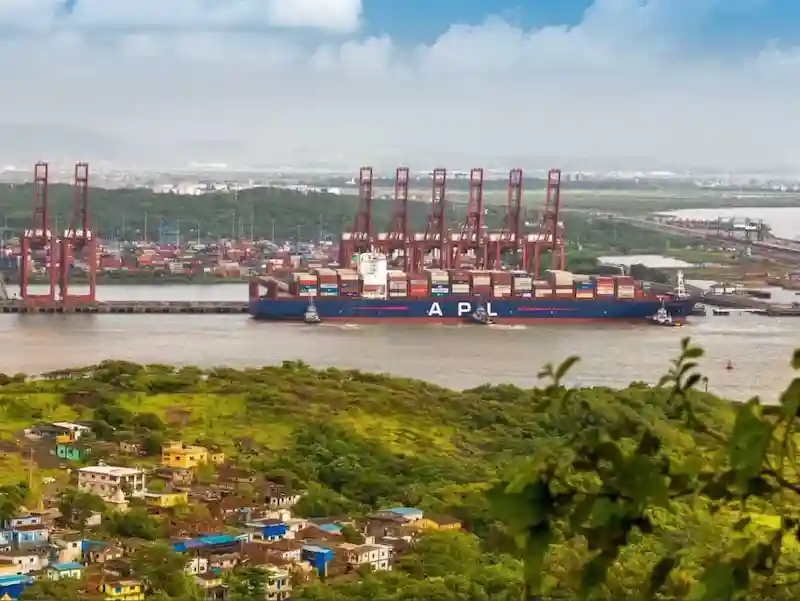
The History Behind the Success of Nhava Sheva
Picture this: the late 1980s in India, a time when the economy was opening up and change was in the air. Nhava Sheva, officially known as Jawaharlal Nehru Port Trust (JNPT), was born out of necessity to relieve the crowded Mumbai Port.
Initially, shipping lines were skeptical — why fix what’s not broken? But the visionaries behind Nhava Sheva knew they could create something unusual. Strategically positioned across Thane Creek, the port was poised to take advantage of its prime location.
Infrastructure was the primary goal. State-of-the-art deep-water berths and advanced container handling facilities were created to meet the demands of the future. The robust hinterland connections allowed for optimizing logistics.
The government also took part — they laid the ground with policies that encouraged public-private partnerships. This support helped the port overcome challenges like fierce competition and the need for constant technological upgrades. That’s why Nhava Sheva is a top global container terminal today.
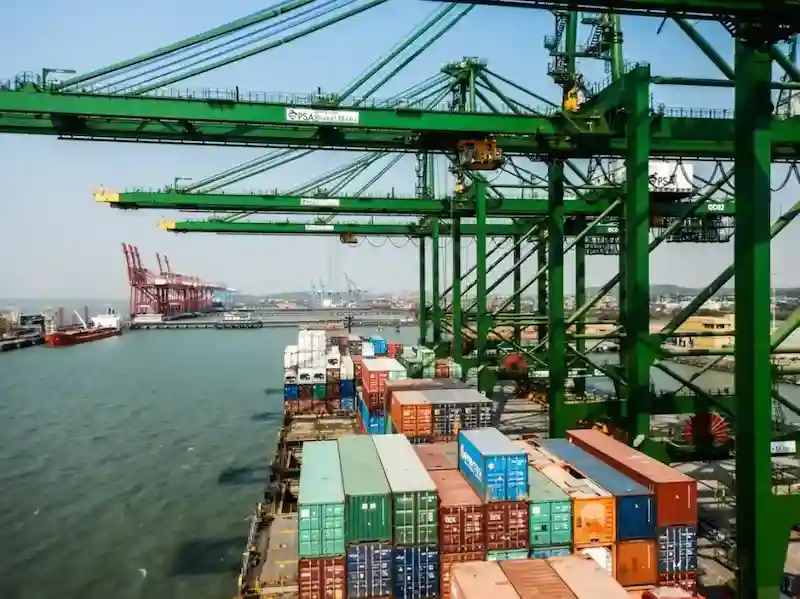
Container Terminals at the Nhava Sheva Port
Nhava Sheva Port boasts five terminals, with four operated by private entities.
- The port’s facility, the Jawaharlal Nehru Container Terminal (JNCT), continues to serve as the primary one.
- DP World operates both the Nhava Sheva (India) Gateway Terminal (NSIGT) and the Nhava Sheva International Container Terminal (NSICT).
- APM Gateway Terminals India Pvt Ltd, a collaboration between AP Moller-Maersk and the Container Corporation of India, is another contributor to the port’s activities.
- Lastly, the Bharat Mumbai Container Terminals (BMCT), launched by PSA International in February 2018, is a relatively new yet important addition to this complex.
| Nhava Sheva container terminal name | Owner | Quay length | Annual throughput (TEU) | Max capacity (TEU) | Utilization rate |
| Jawaharlal Nehru Container Terminal (JNCT) | Port-owned | 680 meters | 1,481,768 | 1,500,000 | 98.78% |
| Nhava Sheva Gateway Terminal (NSIGT) | DP World | 330 meters | 659,000 | 800,000 | 82.38% |
| Nhava Sheva Int’l Container Terminal (NSICT) | DP World | 600 meters | 641,122 | 1,200,000 | 53.43% |
| APM Gateway Terminals India Pvt Ltd | AP Moller-Maersk and Concor | 712 meters | 2,027,896 | 1,800,000 | 112.66% |
| Bharat Mumbai Container Terminals (BMCT) | PSA International | 1000 meters | 23,212 | 2,400,000 | 9.97% |

Hinterland Connection
At Jawaharlal Nehru Port Trust (JNPT), the logistics of moving cargo in shipping containers are quite dynamic, with 27% handled by rail and 73% transported via roadways. However, the connections to the hinterland are far from perfect — they required a substantial investment of 3000 crores (approximately 27 million euros) to improve infrastructure. Currently, a 45 km stretch of four-lane road facilitates this connection, but ambitious plans are being developed to expand it to ten lanes over the next five years.
For rail transport, JNPT offers two corridors. The Northern Corridor extends to Ludhiana, passing through key urban centers like Vadodara and Delhi. Meanwhile, the North-Western Corridor stretches to Rewari and links cities such as Ahmedabad and Jaipur along the way. These corridors are indispensable pathways that enhance the port’s reach across the country and ensure efficient cargo container movement to and from JNPT.
Introducing JNPT SEZ
The JNPT special economic zone (SEZ) is a multi-product hub created to extend the facilities of Nhava Sheva port. It covers an area of 277 hectares and is conveniently situated just 5 kilometers from the port. This SEZ supports export-oriented industries by providing state-of-the-art infrastructure, ensuring easy access to raw materials and multi-modal transportation, which, in turn, opens doors to international markets. The SEZ offers connectivity to the under-construction Navi Mumbai airport, the dedicated freight corridor, and the Trans-Harbor road link.
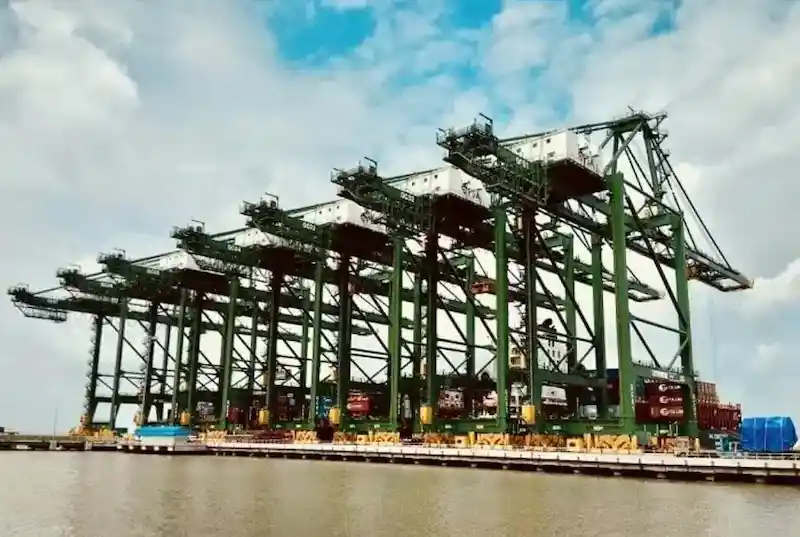
JNPT, as the special planning authority, equips the SEZ with essential amenities. It features a 15 million liters per day water supply sourced from a nearby reservoir and a reliable 45 MVA power supply. The industrial infrastructure includes sewage and solid waste treatment systems, firefighting services, training facilities, and telecommunications centers — and all of them contribute to its designation as a “Smart SEZ”. Also, the SEZ is auctioning 300 acres of land near the port, exclusively for manufacturing companies. It is expected that this initiative will lead to economic growth and create new job openings.
Operational Insights and Potential Partners
Many container suppliers and users conduct their container transactions through the port code for Nhava Sheva and use it as a strategic pick-up and drop-off point. Among them are:
- Sarjak;
- Oceanbox Containers;
- Indus Container Lines;
- Pelican Containers.
The Nhava Sheva airport code is perfect for businesses that want to sharpen their supply chains and broaden their market presence both in India and worldwide.
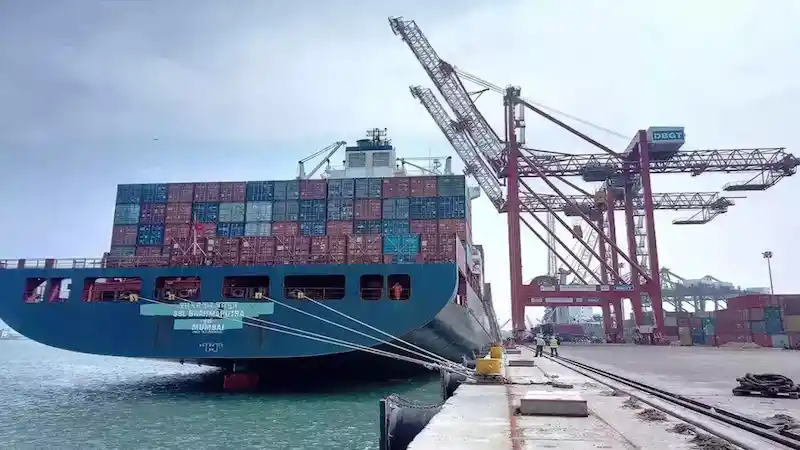
Conclusion
Now that you know everything about where Nhava Sheva port is located and what its primary purposes are, let’s keep it real: this port is indispensable for global trade. The strategic Nhava Sheva port location and its efficiency offer the perfect path for enhancing logistics and exploring new markets. This port is always setting new standards in international commerce.
Vanessa is a dedicated writer and content enthusiast at Pelican Containers. With a background in practical writing and a keen eye for clarity, she transforms complex container topics into easy-to-understand and useful content. Her passion lies in exploring the evolving world of container usage — from smart storage hacks to global logistics trends.
When she's not writing, Vanessa loves discovering creative shipping container projects or traveling to find new inspiration.
Explore thoughtful, informative, and accessible content with Vanessa!
Vanessa is a dedicated writer and content enthusiast at Pelican Containers. With a background in practical writing and a keen eye for clarity, she transforms complex container topics into easy-to-understand and useful content. Her passion lies in exploring the evolving world of container usage — from smart storage hacks to global logistics trends.
When she's not writing, Vanessa loves discovering creative shipping container projects or traveling to find new inspiration.
Explore thoughtful, informative, and accessible content with Vanessa!
FAQ
What are the main functions of the different terminals at Nhava Sheva Port?
Nhava Sheva Port, also known as Jawaharlal Nehru Port, operates several specialized terminals. Think of each Nhava Sheva container terminal as a specialist: container terminals handle a massive flow of goods, liquid bulk terminals manage chemicals and fuel, and dry bulk ones focus on coal and fertilizers.
How does Nhava Sheva Port connect with its hinterland for efficient cargo movement?
The port code for Nhava Sheva is linked to major highways and the Western Dedicated Freight Corridor. It ensures cargo is transported swiftly to and from key industrial areas, cutting down on time and costs.
What are the benefits of the JNPT SEZ for businesses operating at Nhava Sheva Port?
Companies operating within the SEZ benefit from tax incentives, duty-free imports of raw materials and capital goods, and streamlined regulatory processes.
How has the development of Nhava Sheva Port contributed to its success in the global shipping industry?
Continuous upgrades have kept Nhava Sheva ahead. Expanding capacity and embracing new technologies primarily allow it to deal with more cargo and large ships.
